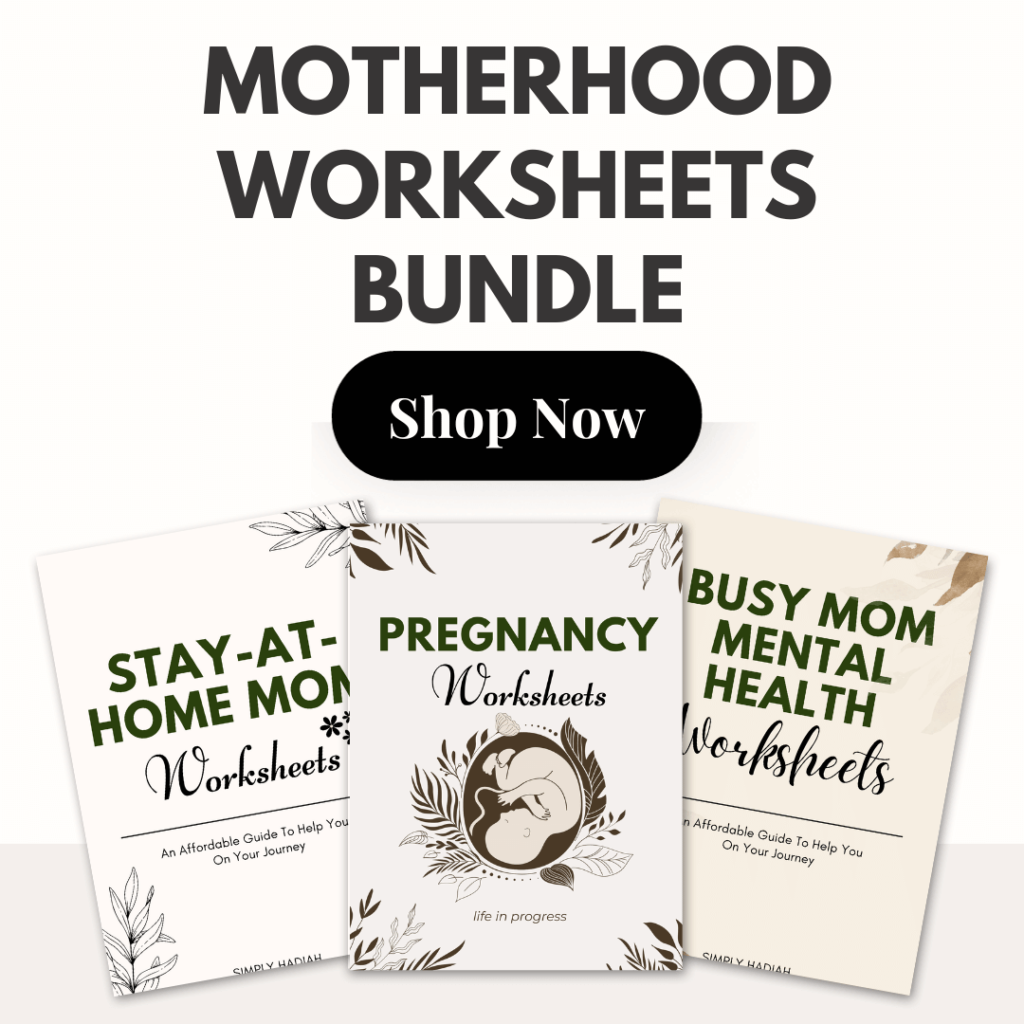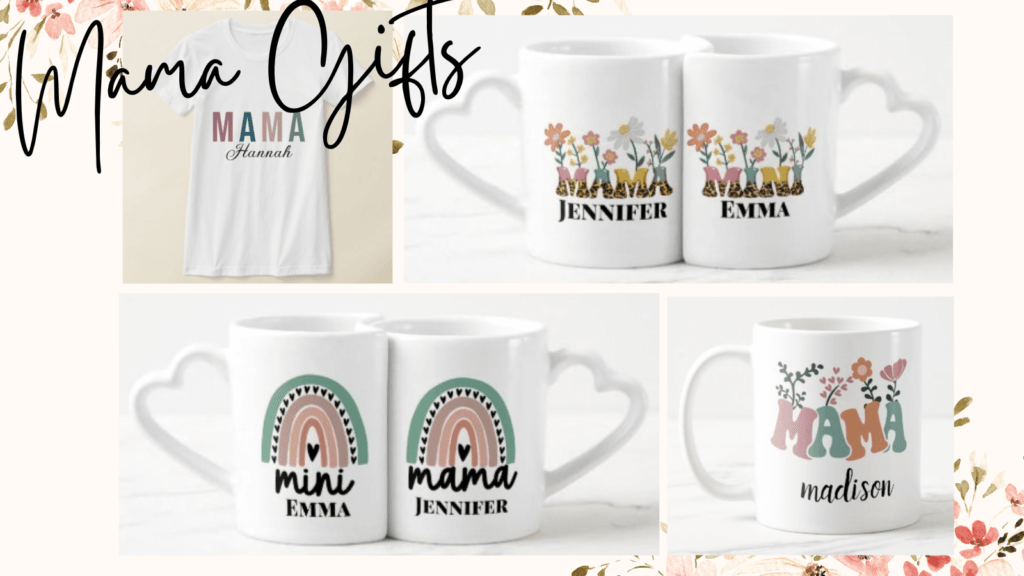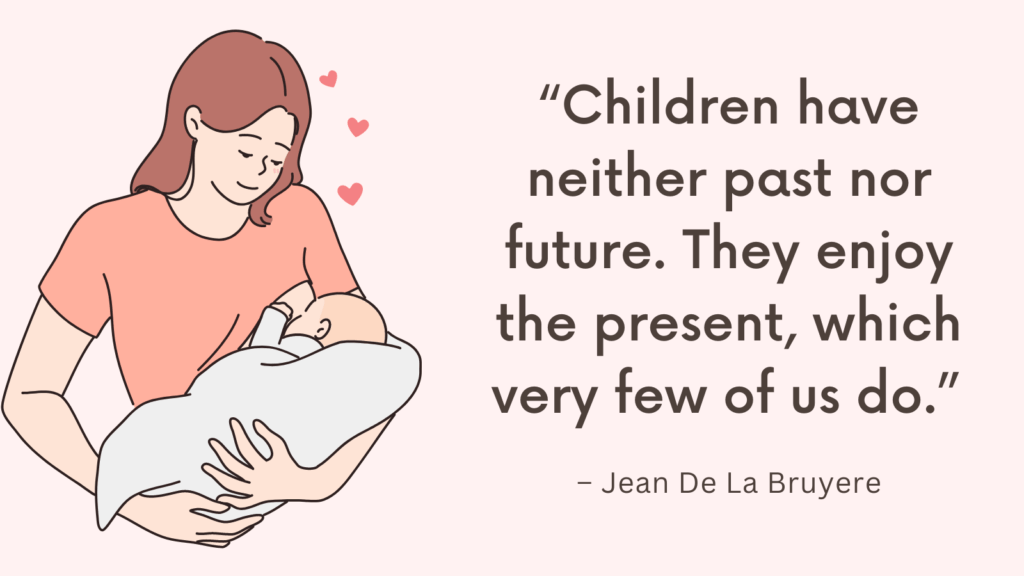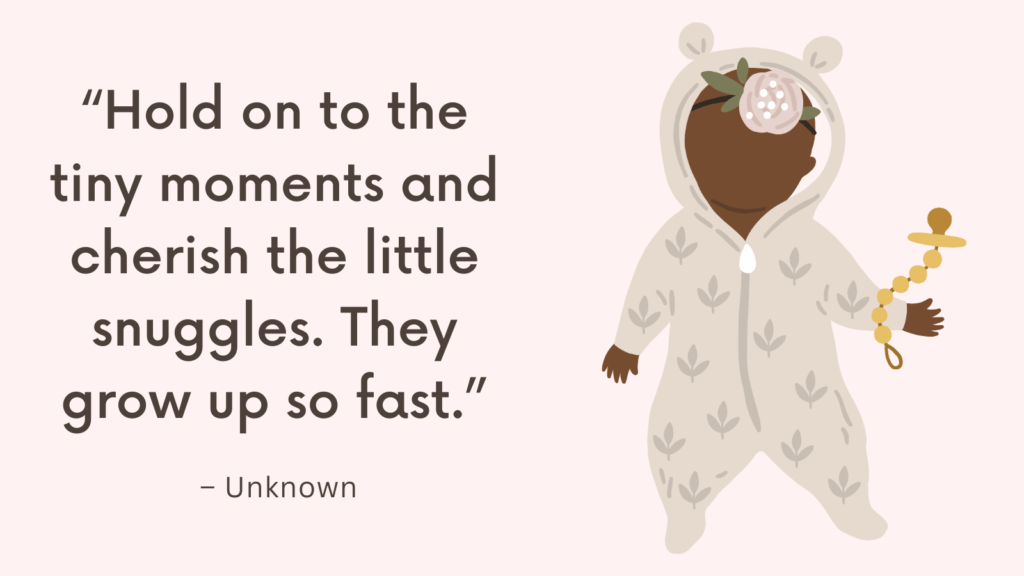In this post, you’re going to learn all about receiving blanket vs swaddle.
What Is a Receiving Blanket?
A receiving blanket is a small, thin and lightweight blanket typically used for wrapping a newborn or infant.
It’s usually made of soft fabrics like cotton, flannel or muslin, which are gentle on the baby’s skin.
Receiving blankets are versatile and can be used for various purposes such as bur ping cloth, changing pad, nursing cover, swaddling, and many others.
They are an essential item for new parents and make a great baby shower gift.
Related: Best 70 Pregnancy Hacks (+Products Recommendation)
Different Materials Used For Receiving Blankets
There are several materials that receiving blankets can be made from. Here are some of the most common:
1. Cotton: Cotton receiving blankets are soft, breathable, and easy to care for. They are a popular choice for babies because they are gentle on their delicate skin.
2. Muslin: Muslin is a lightweight, breathable material that is perfect for warmer weather. Muslin receiving blankets are also easy to clean and get softer with each wash.
3. Flannel: Flannel receiving blankets are warm and cozy, making them a great option for colder weather. They are soft and durable, and can withstand frequent washing.
4. Fleece: Fleece receiving blankets are soft and warm, making them a great choice for colder climates. They are also lightweight and easy to pack, which makes them ideal for travel.
5. Bamboo: Bamboo receiving blankets are eco-friendly and extremely soft. They are also breathable, hypoallergenic, and moisture-wicking, which makes them perfect for babies with sensitive skin.
Related: Best 7 Pregnancy Self Care Products
Different Uses For Receiving Blankets
Receiving blankets are versatile and have a variety of uses beyond just swaddling babies.
Here are some different ways to use receiving blankets:
1. Burp cloth: Place the blanket over your shoulder or on your lap to burp your baby.
2. Nursing cover: Drape the blanket over your shoulder and around your baby’s head for privacy while breastfeeding.
3. Tummy time: Use the blanket to provide a soft surface for your baby to lie on during tummy time.
4. Shade: Use the blanket to provide shade when out in the sun with your baby.
5. Cleaning up messes: Use the blanket to clean up spit-up, spills, and other messes.
6. Stroller cover: Drape the blanket over the stroller to provide extra shade or warmth.
7. Changing pad: Use the blanket as a makeshift changing pad when out and about.
8. Play mat: Lay the blanket on the floor for your baby to play on.
9. Comfort item: As your baby grows, they may develop attachments to their receiving blankets as a comforting item to hold onto.
Related: Best Pregnancy Resources (Information, Apps, Books, Podcasts)
Pros And Cons of Using Receiving Blankets
| Pros | Cons |
|---|---|
| 1. Versatility: Receiving blankets can be used for many purposes such as swaddling, burping, as a nursing cover, on-the-go changing mat, and as a playtime surface. | 1. Size: Some parents may find that receiving blankets are too small for their needs, especially as babies grow in size. |
| 2. Softness: They provide a soft and gentle barrier against your baby’s delicate skin. | 2. Durability: Receiving blankets may not be as durable as other types of baby blankets and may begin to show wear and tear after repeated use. |
| 3. Easy to clean: Receiving blankets are usually machine-washable, making them easy to clean and maintain. | 3. Limited warmth: Receiving blankets are not designed to provide significant warmth, so they may not be suitable for use in cold weather conditions. |
Related: Top 17 Questions To Ask A Doula
What Is a Swaddle?
A swaddle is a blanket or cloth wrap that is used to snugly wrap a newborn baby, typically from birth to around 3-4 months of age.
Swaddling helps to soothe and calm babies by mimicking the feeling of being in the mother’s womb.
It also helps to prevent the startle reflex that can wake up a sleeping baby.
However, it is important to ensure that a swaddle is done correctly, as improper swaddling techniques can increase the risk of hip dysplasia or suffocation. (source)
Related: Minimalist Hospital Bag Checklist (+Hospital Bag Checklist PDF)
Different Materials Used For Swaddles
Swaddles are typically made from lightweight, breathable materials to keep babies comfortable and prevent overheating.
Some common materials used for swaddles include:
1. Cotton: This is the most popular material for swaddles as it is soft, gentle on baby’s skin, and easy to wash.
2. Muslin: This lightweight, open-weave cotton fabric is perfect for warmer weather and is highly breathable.
3. Bamboo: This eco-friendly and sustainable material is hypoallergenic, naturally antimicrobial, and extremely soft.
4. Jersey Knit: This stretch y fabric is similar to a t-shirt material and provides a snug fit for babies who like to wiggle.
5. Flannel: This warm and cozy fabric is great for colder months to keep babies snuggly and warm.
When choosing a swaddle material, it is important to consider your baby’s skin sensitivity and the temperature in your environment.
Related: 10 Tips For Successful Breastfeeding
Different Types of Swaddles
There are several types of swaddles available in the market, each with its own unique features and benefits.
Here are some of the most common types of swaddles:
1. Traditional swaddle: A traditional swaddle is a rectangular piece of fabric that is wrapped around the baby’s body to keep them snug and secure.
2. Swaddle sack: A swaddle sack is a type of swaddle that has a zipper or velcro closure, making it easier to swaddle your baby without using blankets.
3. Sleep sack/swaddle transition blanket: These are designed for babies who are starting to roll over and need to transition out of the swaddle. They allow more movement while still providing the security of a swaddle.
4. Pouch swaddle: A pouch swaddle is similar to a swaddle sack, but it has a pocket where the baby’s legs can be tucked in for extra warmth.
5. Weighted swaddle: These swaddles have weighted areas to provide gentle pressure that can help soothe and calm fussy babies.
6. Stretchy swaddle: Stretchy swaddles are made from soft and stretchy fabric, which allows for a snug and comfortable fit without being too tight.
Remember to always follow the manufacturer’s instructions when using any type of swaddle and never cover a baby’s face or head while swaddled.
Related: Top 8 Breast Pumping Tips For New Moms
Pros and Cons of Using Swaddles
| Pros | Cons |
|---|---|
| 1. Helps Calm Fussy Babies: Swaddling can mimic the feeling of being in the womb, helping babies feel more secure and calm. This can be especially helpful for fussy or colicky babies. | 1. Hip Dysplasia: Over-swaddling can cause problems with hip development, leading to hip dysplasia or dislocation. (source) |
| 2. Improves Sleep Quality: Swaddling can help babies sleep more soundly and for longer periods of time by preventing them from startling themselves awake with random movements. | 2. Overheating: Swaddling too tightly or using heavy blankets can cause babies to overheat, which can be dangerous. |
| 3. Reduces Risk of Sudden Infant Death Syndrome (SIDS): When done correctly, swaddling can reduce the risk of SIDS by keeping babies on their backs and preventing loose blankets near their faces. (source) | 3. Restricts Movement: As babies grow and develop, they need to move their arms and legs to develop strength and coordination. Swaddling can restrict movement and delay these milestones. |
It is important to consult your pediatrician about whether or not swaddling is appropriate for your baby and if so, how to do it safely.
Related: How To Increase Milk Supply During Period?
Receiving Blanket vs Swaddle
A receiving blanket is a multi-purpose blanket that can be used for a variety of purposes such as swaddling, burping, or as a nursing cover.
They are usually made of a lightweight, breathable material like muslin or cotton and come in various sizes.
Receiving blankets are larger than swaddles and are typically 30 x30 inches or larger.
A swaddle, on the other hand, is specifically designed for wrapping a baby tightly to help them feel secure and calm.
Swaddles are often made of stretchy materials like muslin or jersey, and have specific flaps or straps that make it easy to snugly wrap a baby while keeping their arms and legs contained.
So, while both types of blankets can be used for swaddling, swaddles are specifically designed for that purpose and may be more effective at keeping your baby wrapped up tightly.
Related: When Does Breastfeeding Get Easier? A Guide for New Mothers
Which One Is More Suitable For Newborns, Infants, And Older Babies?
Both swaddles and receiving blankets can be suitable for newborns, infants, and older babies depending on individual preferences.
Swaddles are specifically designed to keep babies snug and secure, which can help with sleep and reduce start le reflexes.
Receiving blankets are more versatile and can be used for a wide range of purposes, including as a bur p cloth, a changing mat, or a nursing cover.
If you’re looking for an option that will help your baby feel more secure and calm during sleep, swaddles can be a great choice.
If you’d like a more versatile option that can be used in a variety of ways or if your baby doesn’t seem to enjoy being swaddled, receiving blankets can be a good choice.
Ultimately, it’s up to you to decide which option will work best for your baby’s needs.
Related: Best 10 Breastfeeding Books
How To Properly Swaddle A Baby?
Here are the steps to properly swaddle a baby:
1. Lay a blanket on a flat surface in a diamond shape, with one corner pointing towards you.
2. Fold down the top corner of the blanket to create a straight edge.
3. Place the baby on the blanket with their head above the straight edge, making sure the baby’s shoulders are level with the fold.
4. Take the left side of the blanket and bring it across the baby, tucking it under the right side of the baby’s body.
5. Take the bottom corner of the blanket and fold it up over the baby’s feet.
6. Take the right side of the blanket and bring it across the baby, securing it under the baby’s back.
7. Finally, tuck any loose edges of the blanket underneath the baby to prevent them from getting unraveled.
Remember, make sure the swaddle is snug but not too tight.
The baby should still be able to breathe easily and move their hips freely.
Related: 10 Best Books For New Moms
When to Stop Swaddling?
Swaddling is a great way to soothe and calm newborns, but it’s important to know when to stop swaddling as your baby grows and develops.
It is generally recommended to stop swaddling when babies start showing signs of rolling over on their own, which usually occurs around 3-4 months of age.
At this point, swaddling can become dangerous as it restricts their movement and can increase the risk of suffocation or Sudden Infant Death Syndrome (SIDS).
Once your baby starts showing signs of rolling over or trying to break out of the swaddle, it’s time to transition to other sleep solutions such as a sleep sack or wearable blanket.
These products allow for more movement while still providing a sense of comfort and security.
Always follow safe sleep guidelines recommended by pediatricians and make sure that your baby has a safe sleeping environment.
Related: Best 10 Newborn Care Books
Tips For Transitioning Away From Swaddling
Swaddling is a great way to help newborn s feel secure and comfortable, but at some point, you will need to transition away from it.
Here are a few tips to make the transition easier:
1. Start slow: Begin by swaddling for shorter periods of time during naps or when your baby is calm and awake. Gradually decrease the amount of time you swaddle until your baby no longer needs it.
2. Use a transitional product: There are many products available that can help your baby feel secure without swaddling, such as wearable blankets, sleep sacks, or swaddle blankets with arm holes that allow more movement.
3. Time it right: Choose a time when your baby is generally calm and happy to move away from swaddling. Avoid transitioning during a stressful or tiring time, such as teething or after a vaccination.
4. Place baby in a safe sleep environment: Make sure that your baby’s sleeping area is free of any loose blankets, pillows, or other items that could pose a risk. A firm mattress with a fitted sheet is best.
5. Be patient: Some babies may take longer to adjust to sleeping without being swaddled. Don’t get discouraged if your baby fusses or has trouble sleeping for a few nights. Keep trying, and your baby will eventually adapt to their new sleep routine.
Conclusion
The main differences between receiving blankets and swaddles are their size and intended use.
Receiving blankets are versatile and can be used for multiple purposes, while swaddles are specifically designed for swaddling and providing a snug environment for infants.
However, both blankets are also essential items for new parents, as they provide comfort and security to newborns.




